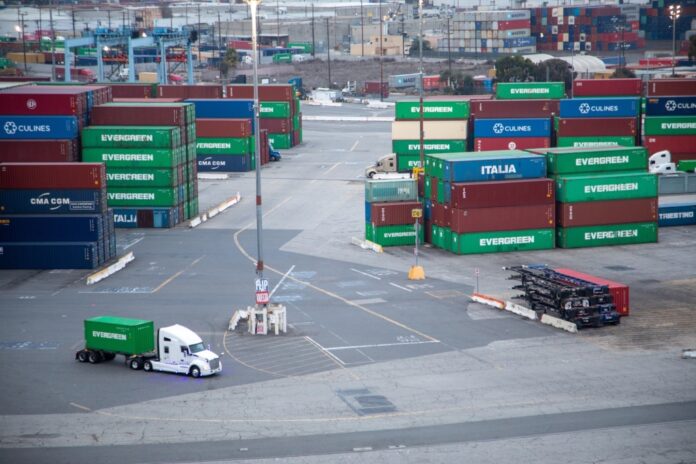[ad_1]
The ports of Los Angeles and Long Beach on Friday, July 15, once again delayed implementing a fee on companies whose import containers linger at marine terminals, with the trade hubs seeing a major improvement in the overall decline in aging cargo following a holiday-induced increase last week.
The Container Dwell Fee, which could take effect — if necessary — on Friday, July 22, has been delayed essentially since its inception.
The fee was initially set to go into effect on Nov. 1, but the ports quickly delayed that until Nov. 15 to give ocean carriers, which would face the charges, time to voluntarily comply. When Nov. 15 came, the ports delayed it to Nov. 22 — and have postponed the fee every week since.
The nation’s two busiest ports have cited progress among ocean carriers in reducing the number of containers at the terminals since late October as the reason for holding off on the fee.
The ports, for example, said on Friday that there had been a 25% combined decline in aging cargo since the fee was announced.
That was only slightly worse than the 27% decline the ports reported on July 1 — and much better than last week.
That combined improvement crashed to 10% on July 8, though the ports said there were two short-lived reasons for that: back-to-back holidays.
Everything was shuttered on the Fourth of July. And the following day, Tuesday, July 5, longshore workers commemorated Bloody Thursday and did not work.
Bloody Thursday commemorates the day San Francisco police fatally shot two dockworkers during the 1934 Great West Coast Strike, was on Tuesday, July 5.
This week, meanwhile, the ports also saw truckers protesting Assembly Bill 5, a state law limiting the use of independent-contractor drivers. The truckers held a convoy through the San Pedro Bay complex, driving on both the 110 and 710 freeways — and snarling traffic.
But that protest did not have any apparent affect on the backlog, with the ports reporting no issues with operations.
Still, after months of seeing aging cargo steadily decline, the ports have seen the percentages frequently plateau of late — and some weeks even worsen.
The 27% combined decline reported on July 1, for example, was four percentage-points worse than the week before and 23 percentage-points worse than the last week of May.
Over the next week, port officials will again monitor and reassess the fee’s possible implementation.
The ability to levy the fee expires on July 28, unless the Long Beach and Los Angeles harbor commissions extend it for a third time.
The fee, if implemented, would begin at $100 per container, increasing by $100 per container each day. Containers set to be transported by truck and rail would incur fines if they remain at the port for nine days or more.
The fee is one of several efforts aimed at speeding the processing of cargo at the ports to eliminate a backlog of ships trying to deliver merchandise.
Fees collected from the policy would be reinvested into programs that aim to enhance efficiency, accelerate cargo velocity and address congestion impacts.
SCNG staff contributed to this report.
[ad_2]
Source link







